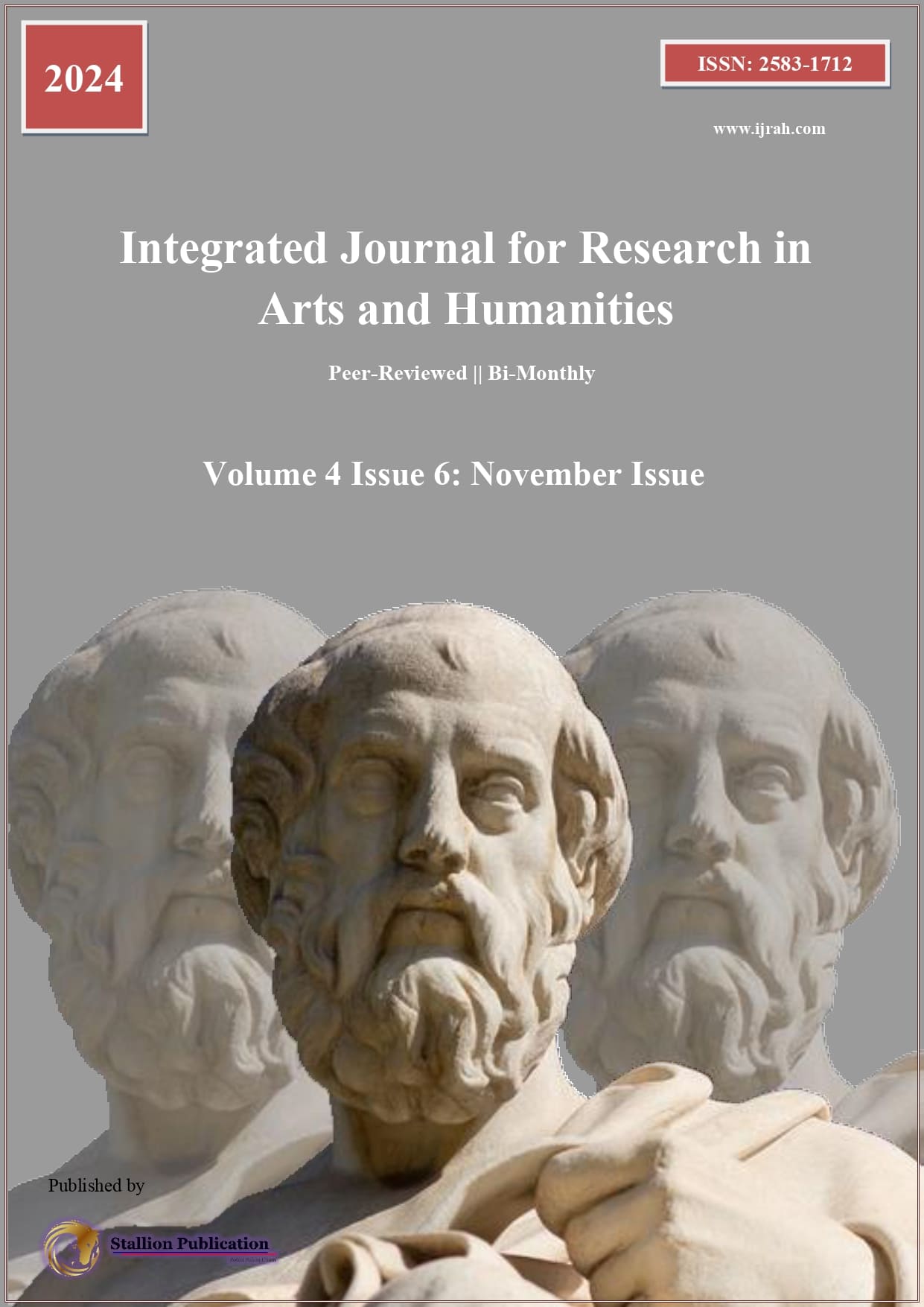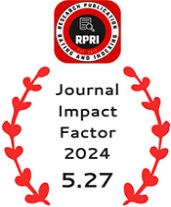Catharsis in the Light of Indian Aesthetics
DOI:
https://doi.org/10.55544/ijrah.4.6.44Keywords:
Catharsis, Nāṭyaśāstra, Aristotle, rasa, Indian aesthetic theoryAbstract
This study explores the concept of catharsis within the framework of Indian aesthetics, particularly through the Nāṭyaśāstra, an ancient Sanskrit text on performing arts attributed to Bharata. While Aristotle's idea of catharsis primarily concerns the purging of emotions, such as pity and fear, through tragedy, Indian aesthetics presents a more holistic and transformative interpretation. The Nāṭyaśāstra introduces the concept of rasa, meaning "essence" or "taste", which serves as the foundation of Indian aesthetic experience. Unlike Aristotle’s catharsis, which is predominantly psychological and emotional, the rasa theory encompasses both emotional purification and spiritual elevation. In Indian aesthetics, the artistic experience is not merely a release of pent-up emotions but a means of achieving self-awareness and transcendence. The interplay of bhāvas (emotions) and rasas in dramatic performances enables the audience to engage in aesthetic contemplation, leading to an inner transformation. Through a comparative analysis, this study aims to highlight the fundamental differences and similarities between Western and Indian interpretations of catharsis. It further examines how the Nāṭyaśāstra’s aesthetic principles offer a richer, multidimensional understanding of emotional expression, making art not just a reflection of reality but a path to liberation and self-discovery.
Downloads
Metrics
References
Chaudhury, P. J. (1965). Catharsis in the Light of Indian Aesthetics. The Journal of Aesthetics and Art Criticism, 24(1), 151-163.
Perrett, R. W. (2013). Catharsis in the light of indian aesthetics. In Theory of Value (pp. 289-301). Routledge.
Chaudhury, P. J. (1965). Catharsis in the Light of Indian Aesthetics. The Journal of Aesthetics and Art Criticism, 24(1), 151-163.
Maillard, C. (2017). The Aesthetic Pleasure of Tragedy in Western and Indian Thought. In The Pursuit of Comparative Aesthetics (pp. 39-48). Routledge.
Golden, L. (1973). The purgation theory of catharsis. The Journal of Aesthetics and Art Criticism, 31(4), 473-479.
Paskow, A. (1983). What is aesthetic catharsis?. The Journal of Aesthetics and Art Criticism, 42(1), 59-68.
Bahm, A. J. (1958). Aesthetic experience and moral experience. The Journal of Philosophy, 55(20), 837-846.
Chaudhury, P. J. (1965). Asceticism in Tagore's Aesthetics. The Journal of Aesthetics and Art Criticism, 24(1), 213-217.
Gotshalk, D. W. (1946). Aesthetic Experience and Its Presuppositions.
Dani, A. P. (2005). Catharsis and Sādhāraṇikaraṇa: A Comparative view. Widening Horizons: Essays in Honour of Professor Mohit K. Ray, 199.
Schaper, E. (1968). Aristotle's catharsis and aesthetic pleasure. The Philosophical Quarterly (1950-), 18(71), 131-143.
RAY, K. N. (1964). A RETHINKING ON CATHARSIS'CATHARSIS AND SADHARAṆIKARAN'. The Calcutta Review, 172.
Ramachandran, T. P. (1980). The Indian Philosophy of Beauty: Special concepts (No. 24). Dr. S. Radhakrishnan Institute for Advanced Study in Philosophy, University of Madras.
Downloads
Published
How to Cite
Issue
Section
License
Copyright (c) 2024 Shubhanshi Goyal

This work is licensed under a Creative Commons Attribution-NonCommercial-NoDerivatives 4.0 International License.

























